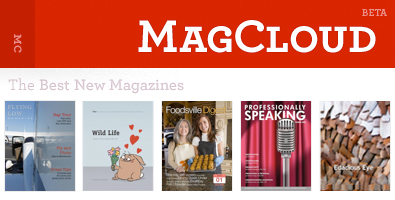
It costs you nothing to publish a magazine on Magcloud. To buy a magazine costs 20¢ per page, plus shipping. For example, a 20-page magazine would be four bucks plus shipping. And you can make money! You set your issue price and all proceeds above the base price go to you.
In contrast, a 20-page saddle stitch publication on Lulu runs as high as $9.50, so this seems a far better avenue for magazine publishing. This is a very good development not just a self-publishing platform, but for further reducing the stigma of self-publishing, as POD is no longer considered a second-rate method of publishing. Magazines are, by and large, a different animal than books and regarded differently, but this is another step towards making self-released books as legitimate as other types of media.
Magazines as Marketing
This also gives self-publishers another marketing avenue. Writers could make a press kit for a book – possibly combining all of a book’s reviews within one cover. For instance, take a look at the media kit for the independent film Two-Minute Heist – be sure click Preview to peek inside. Another idea would be to create a teaser with the first couple of chapters of a book, which could potentially be a collector’s item. Or writers could release short stories in individual volumes.
Who knows – maybe the Self-Publishing Review will bind together some of the better articles into a print magazine. Given the extremely low cost of putting one of these magazines together, there are a lot of good possibilities for Magcloud – which makes it one of the better developments in print on demand technology.
Get an Editorial Review | Get Amazon Sales & Reviews | Get Edited | Get Beta Readers | Enter the SPR Book Awards | Other Marketing Services



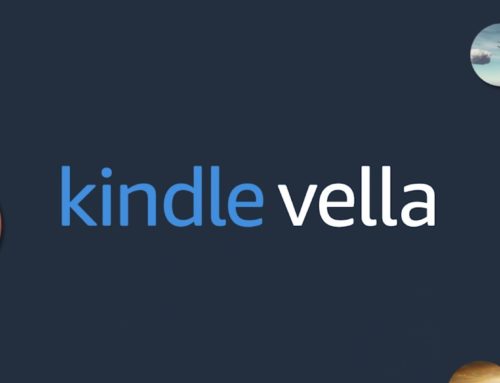

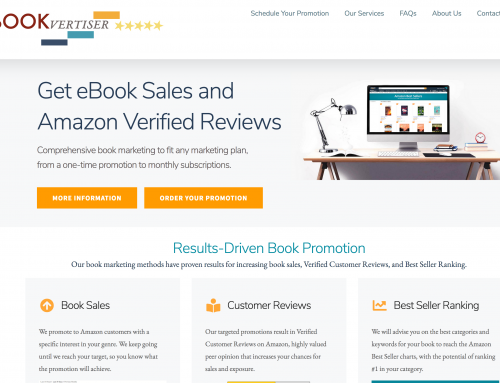
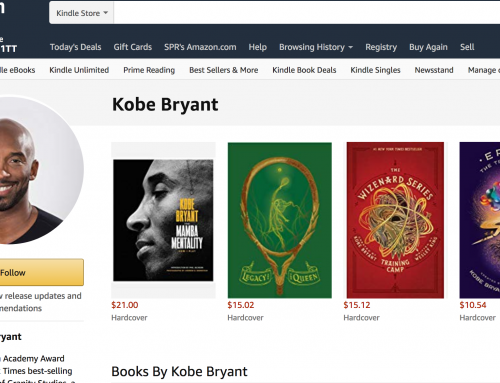
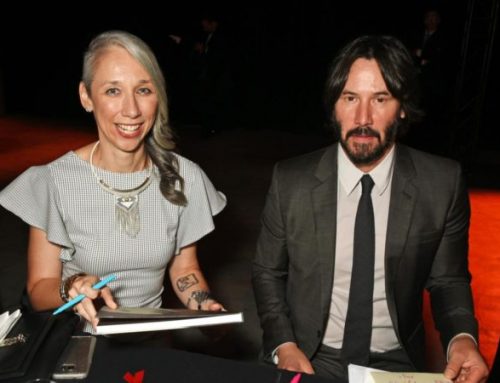



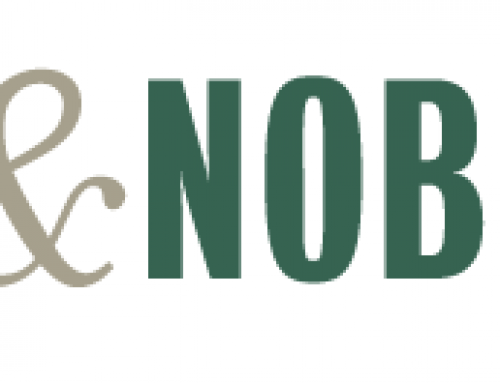
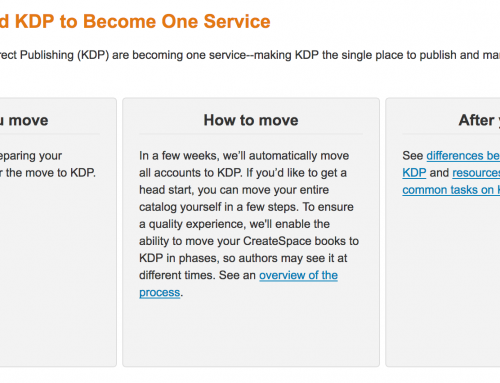

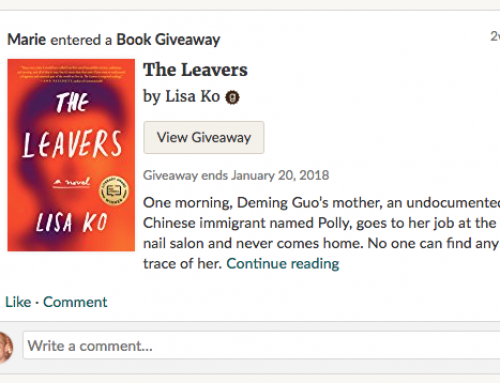
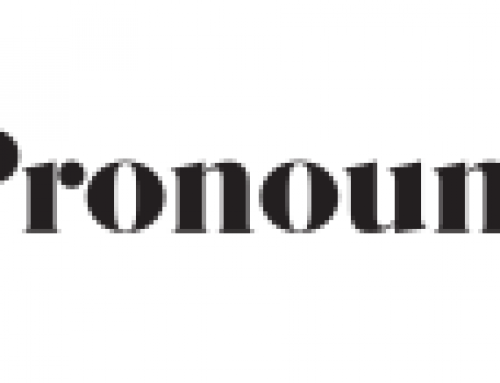
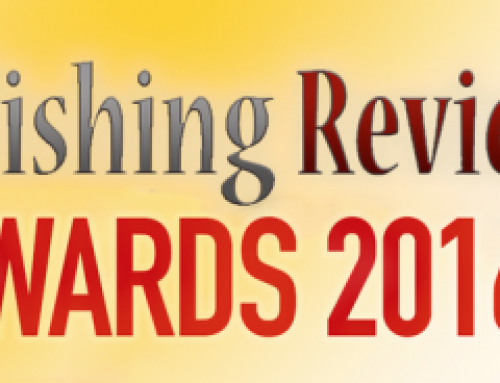


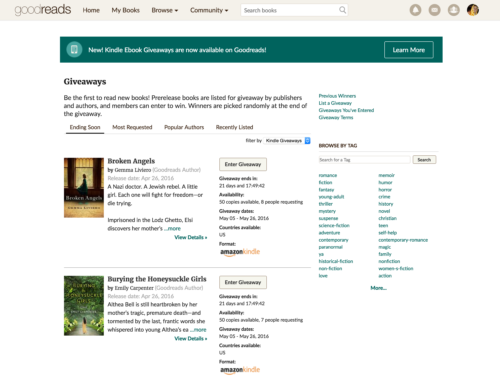


Another idea would be to create a hard copy version of this site as a magazine and distribute copies to local bookstores in major cities. If you put in advertising, maybe you’d make some money.
I don’t mean to rain on anyone’s parade, but $4 + markup for a 20pp magazine is insanely expensive. In the current, downturned economy, many mainstream magazines are failing partly because consumers are looking for ways to cut costs, and a $6 – $10 magazine is a non-essential expense. Plus, a mainstream, $6 – $10 magazine has at least 50pp.
I’m looking at a recent issue of Wired magazine on my desk; it has 110pp. Even if we assume half of those pages are comprised of advertising, that leaves 55pp of content. If you issue this magazine via MagCloud, its base price (before your markup) is .20 x 55 = $11. Even if you only mark it up by $1, we’re still talking $12 for a *magazine*, and this, when 6×9 trade paperbacks retail at $14 – $16.
I think MagCloud magazines will be a tough sell to consumers at those prices.
Those are good points, but I was looking at this in relation to what’s offered by Lulu and other POD’s, as well as the cost of the promo material put out by the film “Two Minute Heist,” which only runs $1.60. So it does have its uses, but perhaps more in promotional packets that don’t run many pages. Generally it’s a fact of life that POD is more expensive, but this is an example of POD coming down in price, even if it’s still more expensive than a large print run.
And how many of that 110 pages is actual content, the actual text of the articles? maybe 25? So 25 pages at 7 or 8 dollars is less expensive?
Podler –
I already acknowledged advertising in my example, saying that even if we assume half of the content is taken up by ads, that still leaves 55pp of real content, and 55pp via MagCloud is still an $11 magazine.
Henry –
I get what you’re saying, but I think many authors make the mistake of only comparing the cost of bringing their books to market via POD provider “A” to the costs under POD providers “B” and “C”, instead of comparing against the one metric that truly matters: how much are consumers typically willing to pay for the finished product, regardless of who published it? This is why I advise indie authors to look very closely at production costs. Sometimes, the numbers simply don’t add up and it’s not economically sensible to bring a given book or magazine to market.
The end consumer doesn’t ultimately care if a POD book or magazine is priced competitively when compared against other POD books and magazines, he just wants to pay roughly the same amount for *any* book or magazine of the same rough dimensions, regardless of how it was brought to print or market.
Also, I disagree that POD is necessarily expensive; it’s only expensive if you go with the wrong service provider. I price my 6×9 POD trade paperbacks at $14, right in line with mainstream books of the same rough dimensions, and still earn an author royalty of over 20% on each copy sold. See my blog post on the subject here: http://aprillhamilton.blogspot.com/2009/03/lulu-vs-createspace-which-is-more.html
Podler –
Another thought occurs to me…
While it may be true that a 150pp magazine that retails for $12 only has 30pp of actual editorial content and 120pp of ads, consumers don’t generally draw that distinction. They see 150pp for $12, period. If you were to offer a competing magazine with just the 30pp of editorial content and no ads, but still price it at $13, I’m pretty confident you’d sell far fewer copies of the 30pp version than the 150pp version. It may not hold to logic, but there it is. People simply don’t expect to pay that kind of money for a magazine unless the magazine is a hefty tome, like Vogue’s annual fashion week issue or similar. Likewise, the thinner the magazine, the less they expect to pay.
I’m seeing this as an avenue for writers to promote books. If you’re going to be printing up a full-fledged magazine, then you should certainly look into other print options. But I just love the model of having no upfront costs. So a writer could slap a book cover on a magazine cover, add a few chapters and reviews, and have some instant promotional material. The Preview function acts somewhat like issuu. Even if no one buys it, it’s another place online to promote a book, and the more web visibility the better.
Writers could create collector’s editions – sort of along the lines of what Wil Wheaton’s doing with Sunken Treasure – following the 1000 fan model. If 1000 people spend $10 on you every year, you can bring in $100,000. You’d need a following, of course, to unload these kinds of collector’s items, but for someone who doesn’t want upfront costs or to deal with print runs, this does have some good possibilities.
Agree, Henry. As a means to create a full-color, glossy promo item, it can work.
BTW, your 1000 fans @ $10 ea. per year equates to $10,000, not $100,000. And I assume that’s gross, not net. In order for you to be netting $10 per fan annually, even if you’re getting a 20%+ royalty per copy sold like I do, each of your 1000 fans must actually buy about $100 worth of your books/magazines per year.
Don’t get me wrong, I’m very pro-POD and a big supporter of indie authorship, and I believe it *is* possible to earn significant income as a self-published author. I just think we indies have to be extra-savvy about the financial side of publishing because we don’t have anyone else figuring these things out for us.
Duh, I’m so financially savvy that I missed a zero. Wil Wheaton’s charging $13.00 for an 80-page book, so he’s making a good profit. But he would have doubled it if he went straight to Lightning Source.
Found another POD magazine provider that can do a 20pp, full-color magazine for $2.89 per copy/14.5 cents per page—$2.44 per copy/12.2 cents per page if you’re willing to run an ad for their service on the back cover of your magazine. They specialize in printing comic books, but hey, a magazine is a magazine, right?
http://ka-blam.com/printing/index.php?page=Calculator&op=1
I think Wil Wheaton is a special case, because while he’s a respected blogger and author *now*, he came on the scene with a large following of Trek fans. I wouldn’t doubt that many who buy his limited edition books are doing so primarily on account of the Trek connection. Not to take anything away from him as an author and tech blogger, he deserves the accolades he gets on those accounts, but it will take a long time for his current endeavors to eclipse the fame he’s achieved as an actor.
I write. I have one book published and am looking for a way to get my books in print and not have to ask the government for bail out money to do it. Any suggestions?
Stevo, Lulu and Worclay are “free.” No start-up costs, but each book will cost you more to print up. Something you’ll have to weigh.
Hmmm… I think you’re missing the point. Books and magazines are entirely non-essential, really. From the viewpoint of an avid reader and artist, I am willing to pay more for stuff from MagCloud for a number of reasons:
It’s independently published: the content has not been messed with by editors, publishing co, etc. to reflect their interests.
They’re well printed.
The ones I’m likely to buy, at least, are made by individuals
I know how much it cost to print, and I know where the profit is going (see above)
No ads.
If a “big corporation” is going to make some money off me, I’d just as well it be HP. At least they have good HR policies!
It’s a different category: some of my favorite magazines (photography, design, foreign) are practically books, and are priced like books. They’re not novels, and not a copy of TIME.
Affordable art: 0.20 a page? For something I can tear out, frame, and hang on the wall? YAY. I can’t afford all the real art I want, so this fills the gaps.
Out of the crop of magazines that I buy on a whim, there are three that I buy regularly every month. 3D Artist, 3DWorld, and Linux Format. After tax, these mags cost me nearly $20 each. All I’m saying is that if the content is worth it. People will pay more. This is especially true for art magazines and niche content.
Also, nothing is stopping an author from subsidizing their mag with advertising.